| Columns Retired Columns & Blogs |
NHT SuperTwo loudspeaker Measurements
Sidebar 3: Measurements
The SuperTwo was one of the least sensitive speakers I've measured in quite a while—its B-weighted voltage sensitivity weighed in at just 82.5dB/2.83V/m, the same as a BBC LS3/5A. Its impedance (fig.1) drops briefly below 4 ohms in the lower midrange, but the speaker is otherwise a relatively easy load for the partnering amplifier to drive. The subwoofer port appears from this graph to be tuned to a low 25Hz, with some complicated behavior two octaves higher, in the crossover region to the mid-woofer.
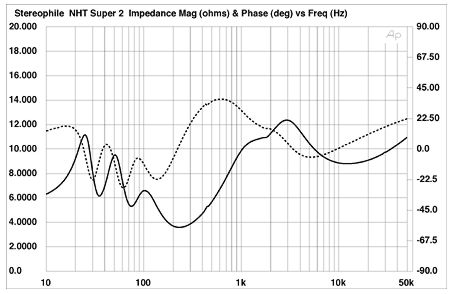
Fig.1 NHT SuperTwo, electrical impedance (solid) and phase (dashed). (2 ohms/vertical div.)
There is a wrinkle in the impedance traces at around 450Hz, implying the presence of some kind of resonance. Fastening a simple plastic-tape accelerometer to the cabinet's back and calculating a cumulative spectral-decay plot (fig.2) reveals a panel resonance at this frequency. However, while this mode is detectable on the side walls and baffle, it is strongest on the back panel, which faces away from the listener; this, coupled with the resonance's high frequency, probably means that its subjective effect is minimal. (In general, the higher a cabinet resonance is in frequency, the less time it rings and the less likely it is to be excited by music.)
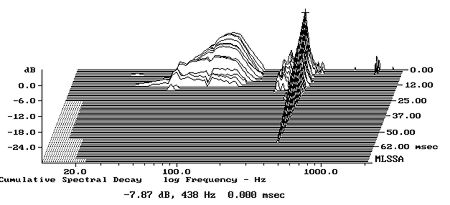
Fig.2 NHT SuperTwo, cumulative spectral-decay plot of accelerometer output fastened to center of back panel. (MLS driving voltage to speaker, 7.55V; measurement bandwidth, 2kHz.)
Fig.3 shows, from left to right, the individual responses of the port, subwoofer, and "SuperOne" array. (My apologies to readers and NHT, but the subwoofer impulse-response file was corrupted, something I did not discover before the review samples had been returned to BD. I therefore had to reconstruct its response in fig.3 from a rough printout.) The midrange-and-tweeter array rolls off in a rather overdamped way below 200Hz, crossing over to the subwoofer around 120Hz. This in turn hands over to the port in the midbass. BD was bothered by the character of the SuperTwo's low frequencies; however, there is nothing readily apparent from the measurements that might correlate with the perceived balance. All I can suggest is that the highish-Q subwoofer alignment might tend to be a bit "grumbly," which in turn might be exacerbated by the crossover's placement in the upper bass. This is a region in which many bass notes have their second and third harmonics; if these are suppressed by even a little, the result will be a dilution of the bass instruments' individualities.
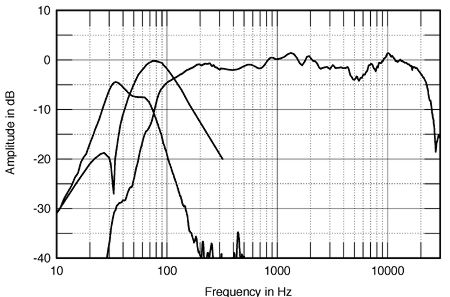
Fig.3 NHT SuperTwo, anechoic response on tweeter axis at 50", averaged across a 30 degrees horizontal window and corrected for microphone response, with the nearfield woofer and port responses plotted below 300Hz.
Higher in frequency in fig.3, the upper midrange is balanced a little forward. Alternatively—and depending on what frequency band the listener's ear latches on to as a reference—the mid-treble is a little laid-back, which might contribute to the overall mellow sound BD noted. It might also be due to the SuperTwo's dispersion (fig.4), which is restricted above 10kHz. Despite the use of a small-diameter midrange unit, there is some evidence of beaming at the top of this unit's passband. In a typical room, this will compensate to some extent for the on-axis energy excess in the same region.
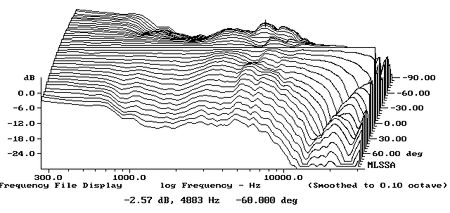
Fig.4 NHT SuperTwo, lateral response family at 50", normalized to response on tweeter axis, from back to front: differences in response 90 degrees-5 degrees off-axis, reference response, differences in response 5 degrees-90 degrees off-axis.
Vertically (fig.5), the SuperTwo doesn't seem very fussy about listening axis, the balance not changing significantly as long as the listener's ears remain between 33" and 41" from the floor. (The tweeter is 37" from the floor, which is almost exactly the average height of a seated listener's ears.)
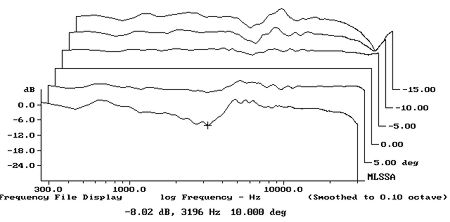
Fig.5 NHT SuperTwo, vertical response family at 50", from back to front: differences in response 15 degrees-5 degrees above HF axis, reference response, differences in response 5 degrees-10 degrees below HF axis.
In the time domain, the SuperTwo's step response on the tweeter axis (fig.6) indicates that the tweeter and mid-woofer are connected with positive acoustic polarity and the subwoofer with negative polarity. The integration between the upper-frequency drivers on this axis is a little untidy, which might well correlate with the lack of on-axis energy in the crossover region. The NHT's waterfall plot on this axis (fig.7), however, is superbly clean, with just perhaps just a hint of stored energy in the upper midrange.
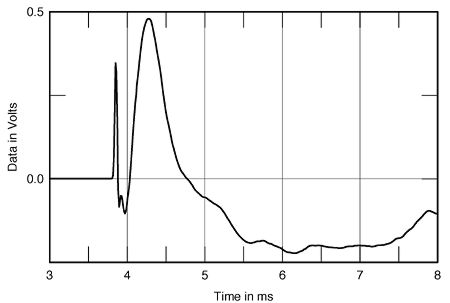
Fig.6 NHT SuperTwo, step response on tweeter axis at 50" (5ms time window, 30kHz bandwidth).
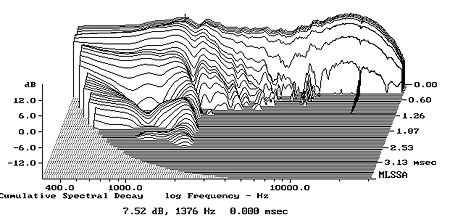
Fig.7 NHT SuperTwo, cumulative spectral-decay plot at 50" (0.15ms risetime).
When measuring a speaker, it's easy to forget price. While I found some things to criticize about the SuperTwo's technical performance, it really performs quite well when you consider how little it costs. As BD said in his introduction, a speaker in this price region must be judged by how well its designer has managed the necessary tradeoffs. I just wish I could have found more clues as to why BD was so bothered by its shortfall in the bass.—John Atkinson
- Log in or register to post comments




































